The Art of Science—Versailles at the Science Museum, London
Have you ever wondered how it would feel to witness the grandeur and opulence of the 18th-century French court? Then you might want to go to London.
Edoardo Cesarino 19 December 2024
“Jeff Koons & Cy Twombly: Primal Gestures (extended until 18 December 2021) brings together a highly unusual pairing of two giants of post-war art. Highlighting two seemingly opposing practices, the exhibition exposes Twombly’s rich visual lexicon of mark-making and gestural abstraction, pairing it with the reductive nature of Koons’ machine-made fabrications while teasing out underlying elements that suggest a commonality that is perhaps not all it appears to be.” All Quotes from the BASTIAN exhibition guide.
Jeff Koons is well known for shiny and showy artworks, such as his Balloon Dogs (one of which was sold for the highest auction price recorded for a living artist at $58.4 million). Some critics view Koons’ work as pioneering, while others dismiss him as crass and cynically capitalist.
The BASTIAN Gallery further explains Koons’ works in the exhibit:
The title of the exhibition has its genesis in Koons’ monumental painting, Primal Swish. Executed between 2008-11 this rich tapestry showcases a multi-layered explosion of energetic swirls whose energy is jarred against the serenity and three-dimensional lure of a rose.
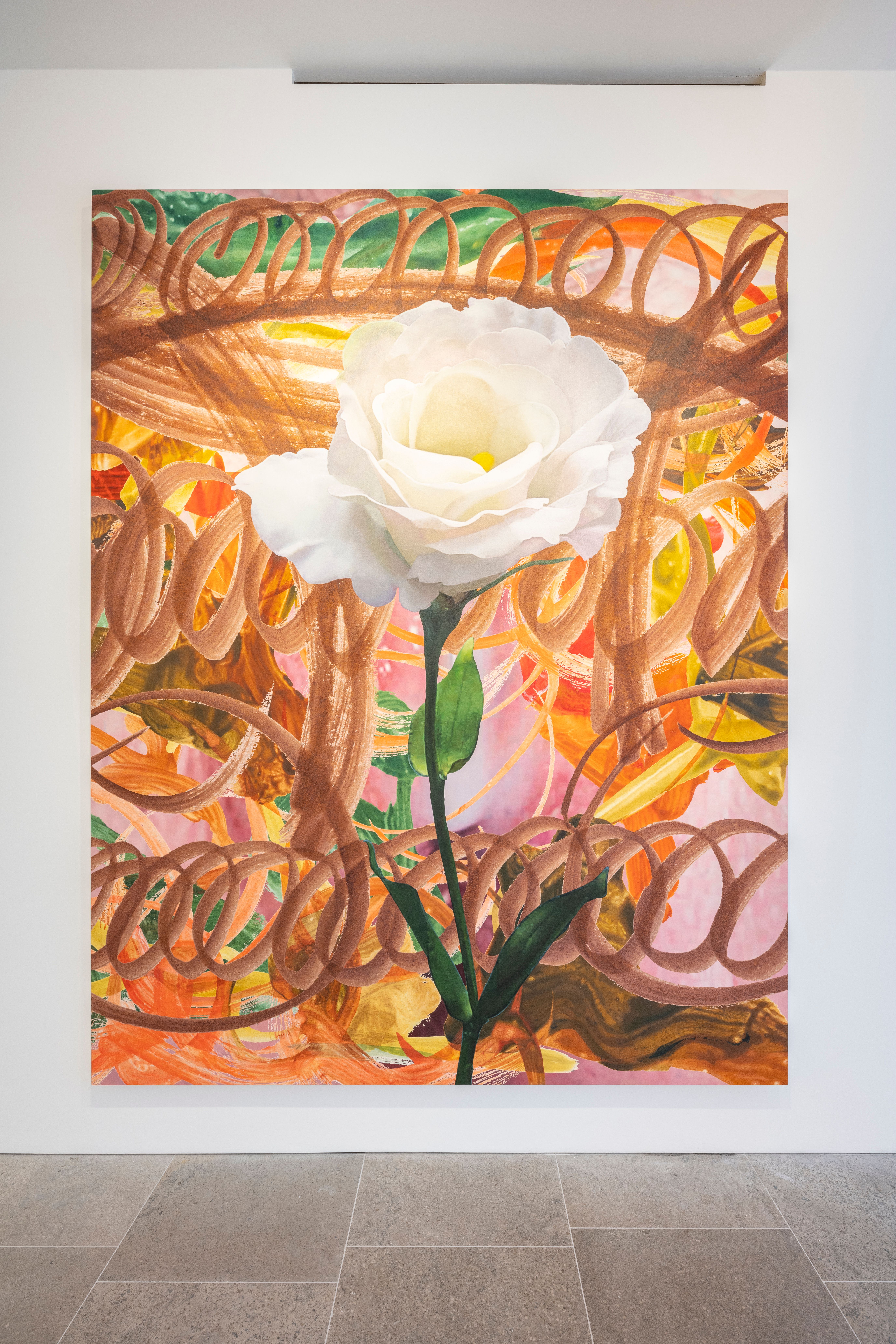
Jeff Koons, Primal Swish, 2008-2011, initialed and dated on the lower right in felt tip pen. Artsy
Primal Swish, the artwork at the heart of this exhibition, confronts the standard perception of Koons’ work with its sheer skill and precision. The 274.3 x 213.4 cm oil painting took Koons three years to create. It’s a work of three careful layers that manages to look pixilated and digitized, showing Koons’ skill as a painter. Shown at BASTIAN gallery alongside an Untitled lithograph series by Cy Twombly (1928-2011), the juxtaposition of the two artworks really highlights Twombly’s instant and instinctive style compared to the careful consideration in Primal Swish.
Working directly onto the litho stones, Twombly was able to indulge in a more visceral process of mark-making, developing a new script that spoke directly to the relationship between crayon and stone, ink and paper.
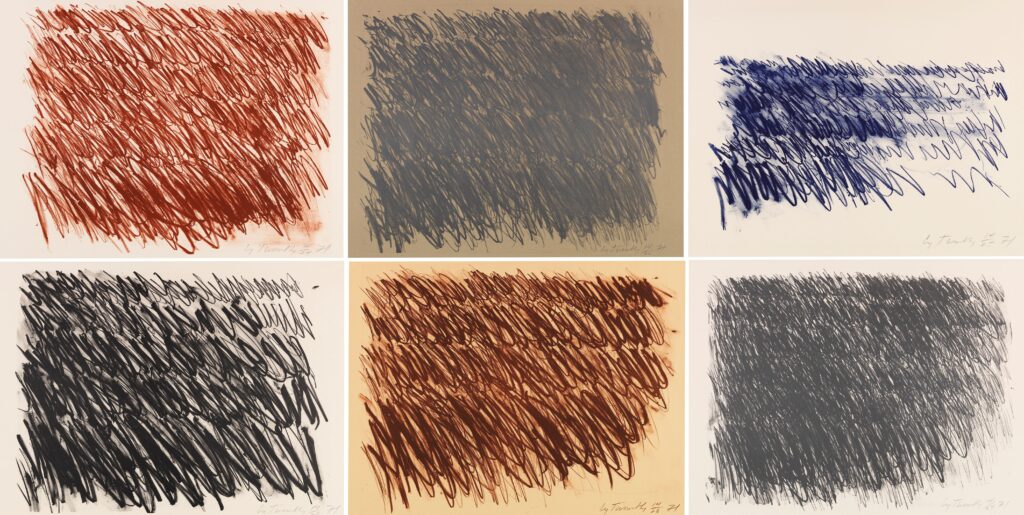
Cy Twombly, Untitled, 1971, color lithography. Artsy.
Dom Pérignon Balloon Venus was designed by Koons for a limited edition run of champagne. It is quintessentially Koons: fluorescent, shiny, commercial, and sexual; the balloon end acts as a very explicit vulva. This tactile piece apparently weighs about five kilograms and the inside case is velvety and looks like male genitalia.
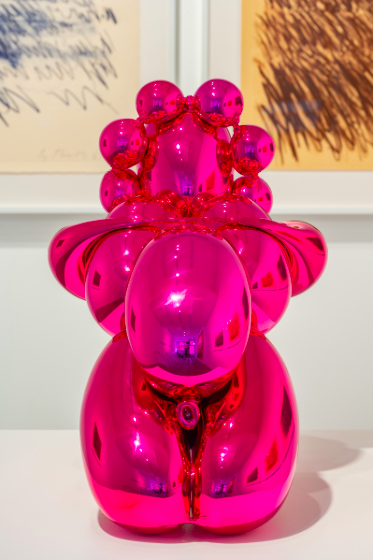
Jeff Koons, Dom Pérignon Balloon Venus, 2013. Gallery’s website.
Again, situated amid Twombly’s Untitled series, the contrast of matte and gloss, bright pink and muted, really works. It seems like a nod to some of the inspiration for Koons’ Balloon Venus. Koons based this commission on Venus of Willendorf, which is a Palaeolithic figurine. Apparently the curves of the sculpture match the curvature of the Champagne’s flavours.
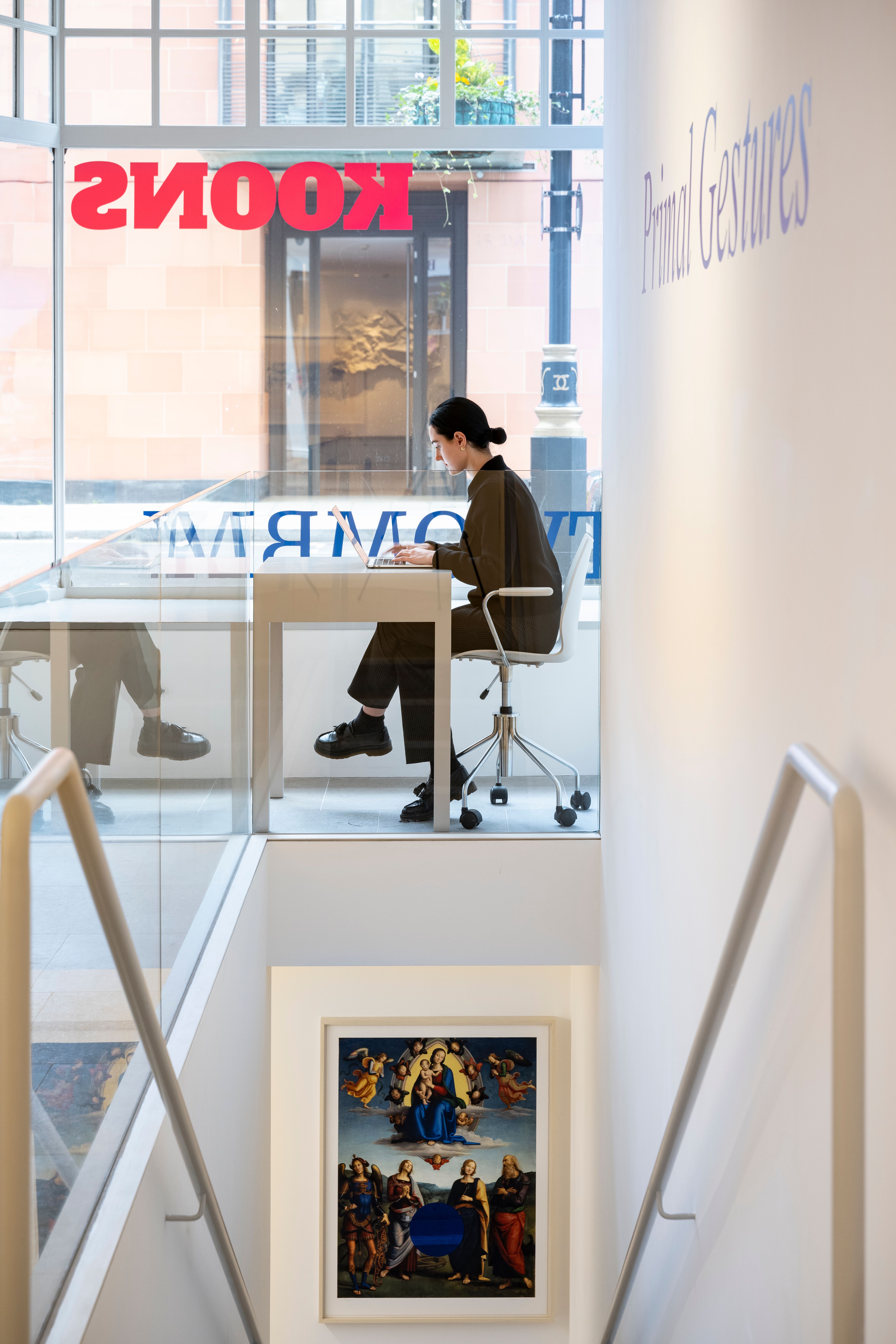
Installation view with Jeff Koons, Gazing Ball (Perugino Madonna and Child with Four Saints), 2017, signed and dated lower margin, archival pigment print on Innova rag paper, glass. Gallery’s website.
Downstairs in the gallery is Five Greek Poets and a Philosopher by Twombly, and Diamond (Red) by Koons. The main focus, however, is on two pieces from Koons’ Gazing Ball series. The first, which lures you down the stairs, is Gazing Ball (Perugino Madonna and Child with Four Saints). Here, the blue orb instantly draws your gaze, absorbing the entirety of the Pietro Perugino painting. But, when you gaze in, all you see is yourself.
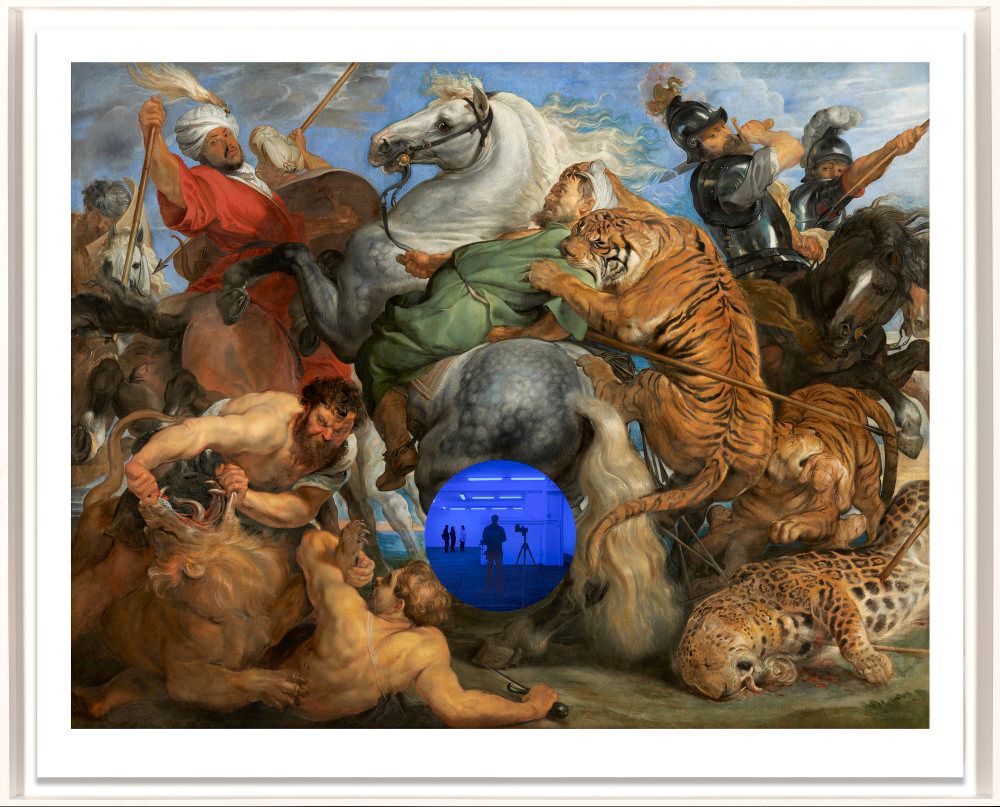
Jeff Koons, Gazing Ball (Rubens Tiger Hunt), 2017, signed and dated in the lower margin, Archival pigment print on Innova rag paper, glass. ArtSpace.
While the angels and figures in the painting are gazing elsewhere, arguably focused on the divine, the 21st century art viewer only sees themselves. In contrast, the blue mirrored orb in Gazing Ball (Rubens Tiger Hunt) has a different effect. Though one still wants to look into it and see if there is anything within, the rest of the painting doesn’t seem to be eclipsed in the same way, making it easier to explore the gory details of the magnificent Peter Paul Rubens.
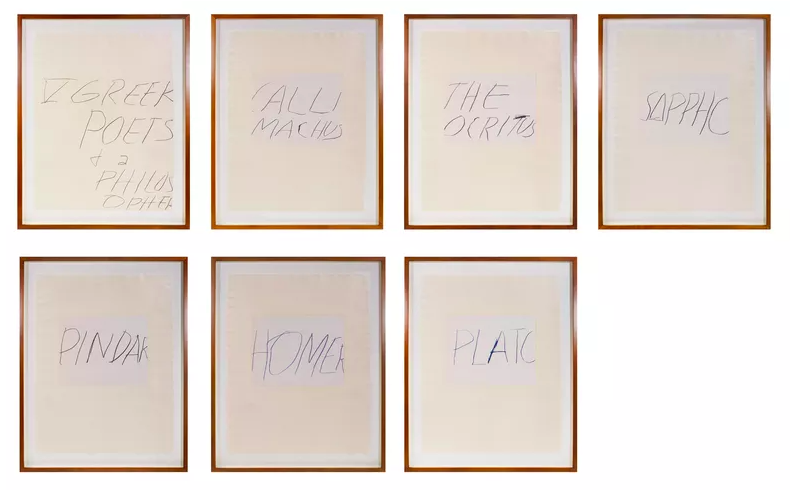
Cy Twombly, Five Greek Poets and a Philosopher, 1978, lithographs with embossment on Richard de Bas mould-made paper. Artsy.
DailyArt Magazine needs your support. Every contribution, however big or small, is very valuable for our future. Thanks to it, we will be able to sustain and grow the Magazine. Thank you for your help!